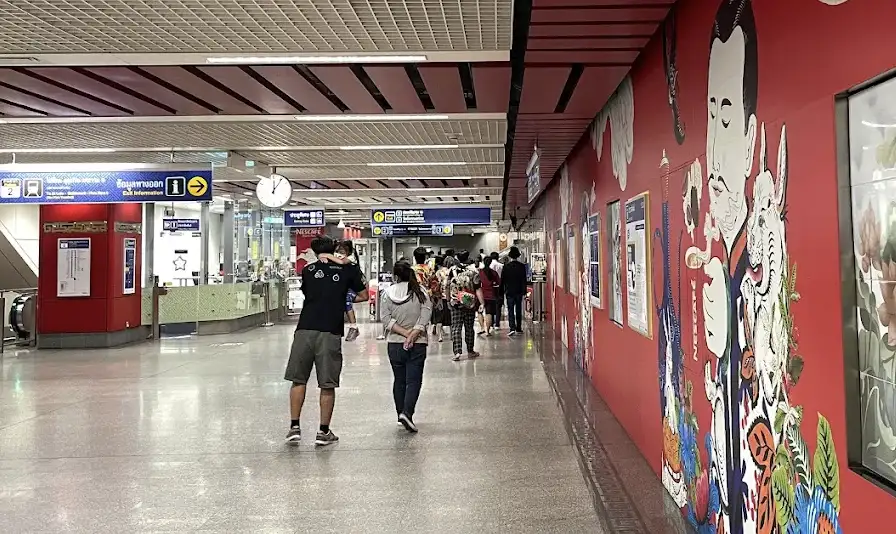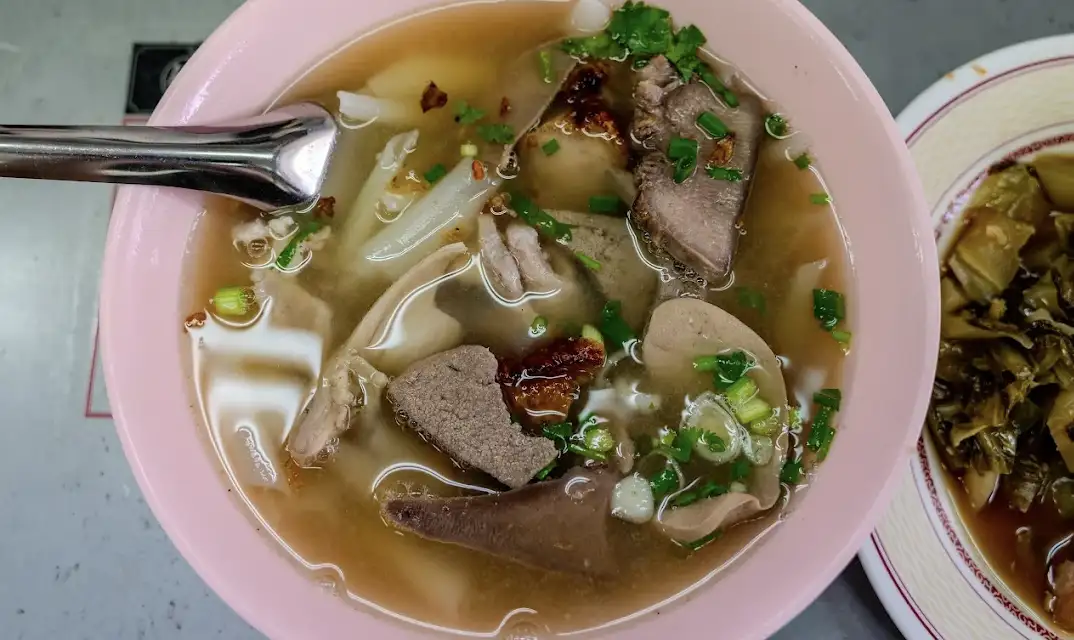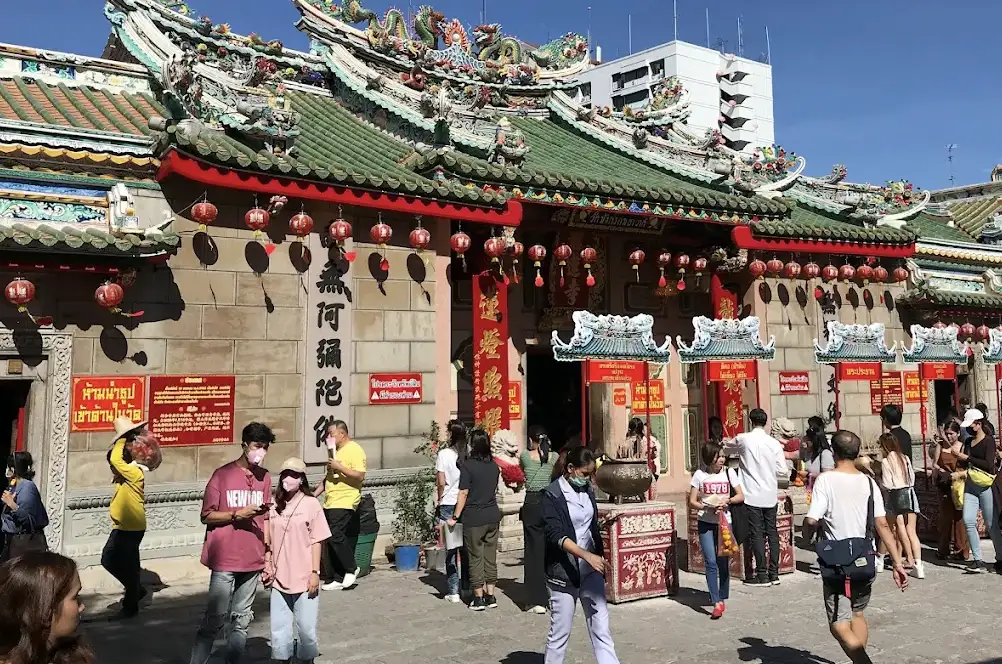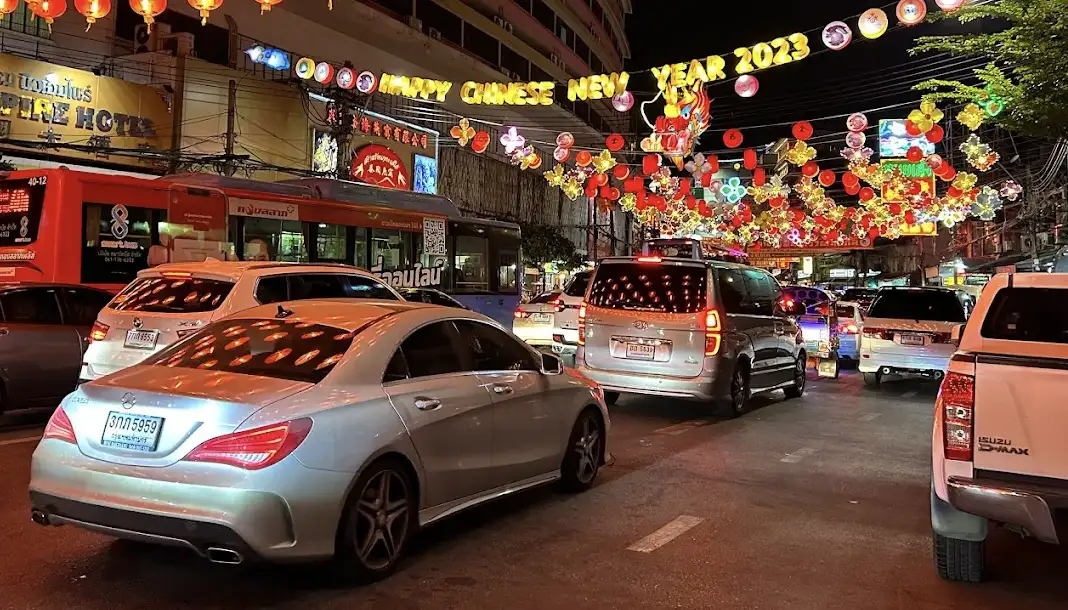As a traveler with a deep love for food and vibrant cultural experiences, my visit to Yaowarat, Bangkok’s iconic Chinatown, in June 2025 was nothing short of spectacular. Located along Yaowarat Road in the Samphanthawong district, this bustling enclave is a sensory overload of neon lights, sizzling street food, and Thai-Chinese heritage. Known as one of the world’s largest Chinatowns, Yaowarat transforms into a legendary night market after sunset, drawing foodies, locals, and tourists alike. Here’s my personal review of Yaowarat, written as an enthusiastic explorer diving into this lively food paradise, enriched with insights from recent reviews for authenticity.
Arrival: A Neon-Charged Welcome
Stepping onto Yaowarat Road in the evening felt like entering a vibrant, glowing dream. The street, stretching about 1.5 kilometers, was ablaze with neon signs and lanterns, casting a colorful glow over the crowded sidewalks. The air was thick with the aromas of grilled seafood, peppery noodle soups, and sweet desserts, mingling with the hum of chatter and the sizzle of woks. I arrived via the MRT, hopping off at Wat Mangkon station, just a short walk from the action. The convenience of the MRT made getting there a breeze, as noted by many travelers who recommend it over navigating Bangkok’s notorious traffic.

The energy was palpable—vendors called out to passersby, motorbikes zipped through the crowds, and the street buzzed with a mix of locals grabbing dinner and tourists snapping photos of the iconic dragon-shaped light installations. A recent review described Yaowarat as “a feast for the senses,” and I couldn’t agree more—it’s chaotic, colorful, and utterly captivating.
The Food: A Street Food Extravaganza
Yaowarat is a foodie’s paradise, and I dove right in. The night market is legendary for its street food, offering everything from Thai-Chinese classics to unique local dishes. My first stop was Nai Ek Roll Noodle, a famous stall serving guay chub (rolled rice noodles) for over 50 years. The peppery broth, packed with tender pork and chewy noodles, was a revelation for just 50 baht. The open kitchen let me watch the cooks work their magic, adding to the experience. A review praised its “fast-moving queue” and “authentic flavors,” noting it’s best to visit in the morning to avoid crowds.

Next, I tried the khao pad pu (crab fried rice) at a stall near Chang Phuek. The fragrant jasmine rice, studded with sweet crabmeat and served with a side of nam pla prik (fish sauce with chilies), was divine for about 60 baht. A Michelin Guide review called it a “comfort food classic,” and it lived up to the hype. For something sweet, I grabbed pa tong go (Thai-style fried dough sticks) at Pa Tong Go Savoey, dunked in pandan custard for 30 baht. The crispy exterior and soft interior were irresistible, as one reviewer raved, calling it “the best in Bangkok.”
I also ventured to T&K Seafood, a popular restaurant known for its lively vibe and fresh seafood. I ordered grilled prawns and an oyster omelet (around 150–200 baht), both bursting with flavor. However, a review warned about inconsistent experiences here, citing issues like cockroaches, so I stuck to outdoor seating to be safe. For dessert, I couldn’t resist mango sticky rice (50 baht) from a street cart—sweet, creamy, and the perfect end to my food trail.
Drinks: Refreshing and Affordable
To wash down the feast, I grabbed a Thai iced tea (30 baht) from a stall, its creamy sweetness balancing the spicy dishes. Fresh coconut water (40 baht) was another refreshing option, perfect for Bangkok’s humid heat. Some vendors offered cold Singha beers (50–70 baht), which paired well with the savory dishes. For a unique experience, I tried Huatuo, a bitter Chinese herbal drink from a stall near Yan Wal Yun, a historic Chinese supermarket. It was an acquired taste but a fun nod to the area’s Thai-Chinese roots.
The Atmosphere: Chaotic, Charming, and Cultural
Yaowarat’s vibe is a blend of organized chaos and cultural richness. The main street and its narrow alleys, like Sampeng Lane, are packed with stalls selling everything from souvenirs to gold jewelry. The Thai-Chinese heritage shines through in the architecture, with historic shophouses lining the streets and temples like Wat Mangkon Kamalawat adding a spiritual touch. A review called it “a melting pot of cultures,” and I felt that walking past dragon carvings and vibrant street art.

The crowds can be overwhelming, especially during peak hours (7–10 PM), as one reviewer noted, advising to “bring water and patience.” Yet, the energy is part of the charm—locals and tourists mingle, creating a lively, communal atmosphere. During my visit, decorations from the recent Chinese New Year festival (January 2025) lingered, with red lanterns and a massive dragon light display adding extra flair. The festival, celebrating 50 years of Thai-Chinese relations, drew huge crowds, as reported by local news.
Beyond Food: Temples, Markets, and Hidden Gems
While food is the star, Yaowarat offers more. I visited Wat Mangkon Kamalawat, the largest Chinese Buddhist temple in Bangkok, adorned with intricate carvings. It was a serene contrast to the bustling street. Sampeng Market, a narrow alley parallel to Yaowarat Road, was a shopper’s paradise with affordable clothes, accessories, and trinkets. A review described it as “a maze of treasures,” and I spent an hour haggling for souvenirs. For relaxation, I popped into Let’s Relax Spa at I’m Chinatown, where a 30-minute foot massage (300 baht) was a perfect break.
Tips for Visiting Yaowarat
Based on my experience and traveler insights, here’s how to make the most of Yaowarat:
- Visit in the Evening: The night market comes alive from 6 PM to midnight. Avoid Mondays, as many stalls are closed.
- Bring Cash: Most vendors are cash-only, with dishes costing 30–200 baht. Small bills are handy for quick transactions.
- Navigate the Crowds: It gets packed, so wear comfortable shoes and bring water. Early evening (5–6 PM) is less crowded.
- Try a Food Tour: If the options overwhelm you, join a guided tour like the Bangkok Chinatown Private Night Street Food Tour to sample curated dishes.
- Use MRT: Wat Mangkon station is the easiest way to reach Yaowarat. Taxis or tuk-tuks are alternatives but negotiate fares.
- Be Food-Safe: Stick to busy stalls with fresh ingredients to avoid stomach issues. Avoid controversial items like shark fin or bird’s nest if you’re ethically opposed.
Final Take: A Must-Visit Foodie Haven
Yaowarat is a dazzling, delicious adventure that captures the heart of Bangkok’s Thai-Chinese culture. The street food, from peppery guay chub to sweet mango sticky rice, is affordable and unforgettable, while the vibrant atmosphere and cultural landmarks make it more than just a food stop. It’s chaotic and crowded, but that’s part of its charm. As one reviewer put it, “Yaowarat is where you feel Bangkok’s pulse.”
Would I return? Absolutely. Next time, I’d explore more side alleys and try dishes like grilled squid or dim sum at Hagow Yaowarat, which has a 4.4/5 rating for its affordable dim sum. If you’re in Bangkok, Yaowarat is a must for foodies and culture lovers. Come hungry, bring an open mind, and prepare for a night of neon-lit magic.

